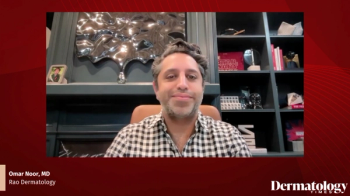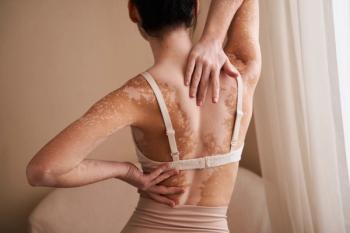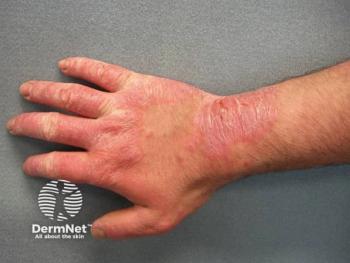
- Dermatology Times, July 2025 (Vol. 46. No. 07)
- Volume 46
- Issue 07
Dermatology Times July 2025 Print Recap
Key Takeaways
- Hidradenitis suppurativa requires a combination of systemic and procedural interventions for effective management, especially in moderate to severe cases.
- Adult acne is a chronic inflammatory disorder with significant psychosocial impact, necessitating early intervention to prevent scarring and pigmentary changes.
Learn more about the in-depth topics covered in the July 2025 print issue of Dermatology Times.
The July issue of Dermatology Times includes a collection of thought-provoking articles and topics ranging from surgical and adjunctive treatments for hidradenitis suppurativa to integrating trifarotene in acne vulgaris. Be sure to read the highlights from the issue below. Also, don’t miss a moment of Dermatology Times by signing up for our
Below the Surface: Dermatologic Procedures for Hidradenitis Suppurativa
The first time I met a patient with hidradenitis suppurativa (HS), I was a first-year dermatology resident who had never heard of this condition. I was shocked by the extent of the disease and its social and emotional toll on patients. As my dermatology training went on, I realized that many patients with HS had very advanced disease. Numerous patients described their traumatic experiences with the health care field. In HS, painful abscesses and lesions often drain, and they usually appear on the genitals, buttocks, inframammary areas, and axillae. Patients explain the significant impact on their quality of life and how they have had to adjust to cope with their disease. Although systemic medical therapy remains first line, procedural interventions are crucial for targeted lesion clearance and symptom control, especially in moderate to severe cases.
Thankfully, research findings have advanced our understanding of HS pathophysiology over the past few years. This has led to more effective, refined treatments that are often used in combination to tailor treatment plans for each patient. These medical treatments include hormonal agents, oral and topical antibiotics, and biologics. We have found that these treatments can be very effective with the addition of timely procedural interventions. The type of procedure depends on the discussion with patients about their preferences, Hurley stage, disease severity, and location of lesions.
Integrating Trifarotene and Topical Retinoids Into Acne and Acne Sequelae Management
Adult acne is increasingly recognized as a chronic inflammatory disorder with a wide spectrum of presentations and a significant psychosocial burden. Beyond the visible lesions, postacne sequelae, including atrophic scars, acne-induced hyperpigmentation, and persistent erythema, are major contributors to long-term patient dissatisfaction, reduced quality of life, and psychological distress.
“While having acne in of itself is distressing, postacne sequelae also has a significant quality-of-life impact on patients, particularly scars and postinflammatory hyperpigmentation and erythema. Early intervention is absolutely critical to reduce the risk of any acne lesion leading to scarring or pigmentary change,” Naiem Issa, MD, PhD, said in a conversation with Dermatology Times. Issa is a study author and dermatologist at Forefront Dermatology in Vienna, Virgina.
Skin Quality: Defined by Global Consensus, Delivered Through Personalized Treatment
Skin quality has always played a central role in aesthetic medicine, influencing how beauty is perceived, experienced, and treated. In today’s practice, this role has expanded: holistic, patient-centric approaches are now paired with growing demands for clarity, precision, and personalization. Clinicians are expected to deliver harmonious, natural outcomes and understand the distinct functional and structural contributors to skin quality, from dermal architecture to surface reflectivity, that collectively shape perception. As aesthetic care evolves, skin quality is no longer an abstract ideal but a multidimensional concept requiring a structured and clinically meaningful definition.
In 2021, the growing need for structure and clarity led to the publishing of a peer-reviewed consensus by a multinational board of experts in dermatology and aesthetic medicine. This collaboration helped better define skin quality through 4 clinically relevant and perception-driven categories, known as the Emergent Perceptual Categories: firmness, surface evenness, tone evenness, and glow. There are no standardized criteria for good skin quality. To establish a consensus for good skin quality parameters and measurement and treatment options, a virtual skin quality advisory board consisting of a global panel of highly experienced aesthetic dermatologists/aesthetic physicians was convened.
Photoprotection During Pregnancy: Clinical Guidance for Dermatologic Care
Pregnancy induces significant hormonal shifts, including elevated levels of estrogen, progesterone, and melanocyte-stimulating hormone, which collectively stimulate increased melanin synthesis. This heightened melanogenesis often manifests as hyperpigmentation, presenting as melasma and linea nigra. Concurrently, these hormonal changes increase skin sensitivity to UV and visible light exposure, exacerbating pigmentary alterations and increasing susceptibility to UV-induced skin damage.
Despite well-established benefits of photoprotection in preventing pregnancy-related pigmentation and skin damage, sunscreen usage remains suboptimal among pregnant individuals. Factors such as concerns over product safety, limited awareness, and cosmetic acceptability contribute to low adherence. Tailored photoprotection strategies that prioritize safety and user adherence are therefore essential in this population.
Articles in this issue
5 months ago
Is AI Transforming Skin Care?5 months ago
The Value of RAD, According to Clinicians5 months ago
A New Canvas for Conversations in DermatologyNewsletter
Like what you’re reading? Subscribe to Dermatology Times for weekly updates on therapies, innovations, and real-world practice tips.



















